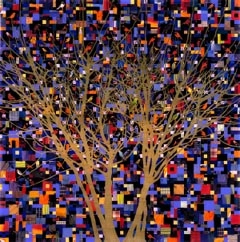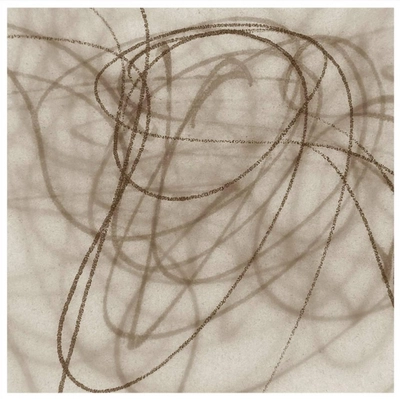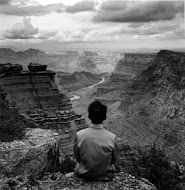ARAS Connections: Image and Archetype - 2014 Issue 3

A small organization such as ARAS depends enormously on the hard work of a handful of people—staff, curator, Board members. For the past several decades, Carol Herbert’s dedicated efforts on behalf of ARAS have been in a league of their own. Literally, there isn’t anything you see from ARAS—our online site, our books, our presence in the world—that doesn’t have the stamp of Carol’s tireless work for ARAS.
She helped raised the funds to build ARAS Online and then she oversaw the incredibly complicated process of digitizing the images from the archive and building out the site with its commentary. When we recently decided to redesign and upgrade the site after ten years, Carol once again stepped forward and took the lead in managing the process along with Allison Tuzo and an excellent team of technology experts. The buck has always stopped with Carol when it comes to making sure that things are done correctly and well. Trained as a lawyer with experience in running a small company, Carol knows how to manage, how to lead, how to advocate, how to simplify and clarify, and perhaps most importantly, how to navigate the tricky waters of getting a creative project done. Carol is stepping down from the Board after invaluable service. She will be sorely missed, although fortunately she is not removing herself from playing a role as a consultant to us in the future. I, personally, have worked with Carol on all of these projects over the years, and put most simply, she is the best. We are deeply grateful for her long service to ARAS and are very lucky that we have benefited from her love for ARAS all these years.
One of the projects that ripened during Carol’s tenure is The Book of Symbols. We recently learned that it remains among the top selling books in Taschen’s collection, even four years after publication (which, in the book world, is a long time!) It now appears in book stores around the world in seven different languages. We are so proud that our long, quiet work has born such fruit in the world and continues to make a significant contribution to the cultures of the world.
Selections from the 2012 Art and Psyche in the City Conference

We continue our tour of outstanding presentations from the 2012 Art and Psyche in the City Conference, this time with three different experiences of visual image. The companion pieces Shadows and Reflections by Judy Evans and Dream Train by Ron Hartley are accompanied by music that works as a thread tying together a wide range of photos and paintings. The third presentation by Ryan Bush called Abstract Photgraphy: A Bridge to Imaginal Worlds has its own rhythm and pacing as we are invited into a soulful artistic process.
In Ron Hartley’s Dream Train we watch the sleeping subway riders, eyes shut, traveling in the dreamworld. They all look so peaceful as they roll along to their separate destinations. We become curious as onlookers: Who are they? Where have they been and where are they going? What do their dreams look like? How do they know when to get off?
Judy Evans’ piece Shadows and Reflections reveals a stunning body of work. Her use of light and subtle color bring the natural world within the immediate range of experience for the viewer. Accompanied by music, this wonderful gallery show by an expert painter unfolds right on your computer.
Ryan Bush enters city life with enthusiasm and imagination. Using technical skills, Ryan blurs boundaries or looks at specific aspects of an object such as a tree in detail. He separates out different sections to reveal the natural beauty that can be missed without careful scrutiny. In doing so, Ryan builds bridges from the literal here and now picture to the realm of the eternal and the imaginal.
Dream Train
Shadows and Reflections
Abstract Photography: A Bridge to Imaginal Worlds

When I arrived in New York a few days before the 2012 Art and Psyche Conference, it felt wonderful to be immersed in the city, surrounded by so many things to see and experience. I immediately experienced the pull of fascinating things all around me that I felt compelled to photograph. Overhead, towering giants slowly dance, or embrace over the decades and centuries. I am just as fascinated by the exposed steel bones of the city, and by the signs of constant rebuilding and renewal. Mysteries are hidden under our feet in the lowliest of manhole covers, or in the sidewalk grates. I especially love the overhead wires, which have their own music.
Ever since I started making photographs (around 1998), I have been drawn to abstract images: patterns, textures, lines, simple geometric shapes, and rhythms. As I worked more with abstract photographs and learned more about Jungian psychology, I began to realize that creating abstract photographs is about much more than making a beautiful image. It is about making a connection with something deeper, a hidden intermediate level of reality where matter and spirit meet. That intermediate world is the psychoid in analytical psychology, or the imaginal world as it is called by Henri Corbin in the tradition of Sufism or mystical Islam, which I will be referring to because of its in-depth systematic analysis of imagination, and its understanding of the invisible world that we have largely lost sight of in our materially-oriented Western culture.
Read the full text of Abstract Photography: A Bridge to Imaginal Worlds.
For larger images from the paper, view the accompanying PowerPoint file here.
The Poetry Portal

The Poetry Portal is a place of community honoring the spirit and energy of words, of poems that are surrounded by the picket fences of a creative community. It is also a place for inspiration, not just in the images we choose and the poems we write, but hopefully, in the afterthought, the encouragement and revelations that it provides.
Revelations are most difficult to conjure and as they are important one must find them along the paths of journey to places of spirit, heart and soul. And like Robert Bly's remarkable poem, Stealing Sugar from the Castle, revelations can bring the greatest joy. Though none would be possible dwelling in safety and forgetting the journey.
We honor the path, the road, that winding ribbon of highway that leads us to places unknown, and if we can give ourselves up to it- we may just find joy there.
We hope the image Grand Canyon, Arizona by Tseng Kwong Chi will inspire your journey. We invite you to send your poems to poetry@aras.org by November 15th. Here are some of the poems that were submitted for our last Invite to Write. Thank you to all who took part.
Contents
Become a Member of ARAS!
Become a member of ARAS Online and you'll receive free, unlimited use of the entire archive of 17,000 images and 20,000 pages of commentary any time you wish—at home, in your office, or wherever you take your computer.
The entire contents of three magnificent ARAS books: An Encyclopedia of Archetypal Symbolism, The Body and The Book of Symbols are included in the archive. These books cost $330 when purchased on their own.
You can join ARAS Online instantly and search the archive immediately. If you have questions, please call (212) 697-3480 or email info@aras.org
We Value Your Ideas
As our newsletter grows to cover both the ARAS archive and the broad world of art and psyche, we're eager to have your suggestions and thoughts on how to improve it. Please send your comments to info@aras.org. We look forward to your input and will reply to every message.
Subscribe
If you're not already a subscriber and would like to receive subsequent issues of this newsletter by email at no cost, e-mail us at newsletter@aras.org.
